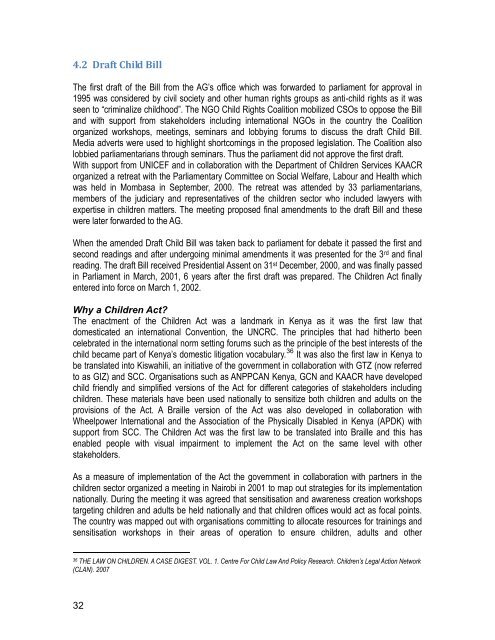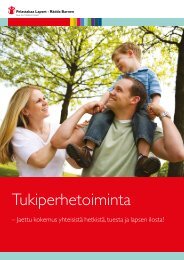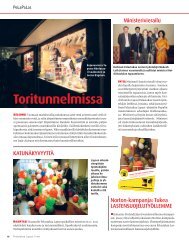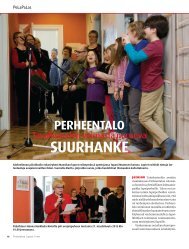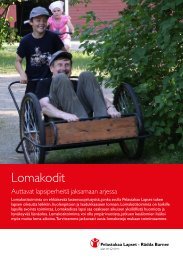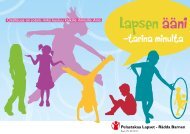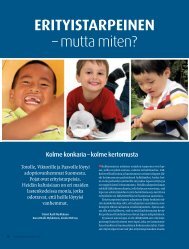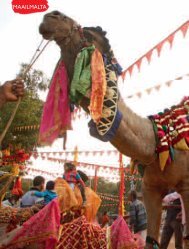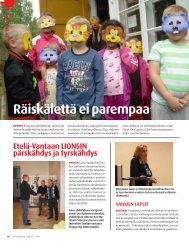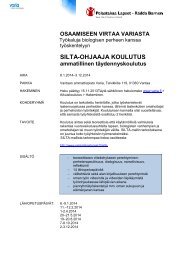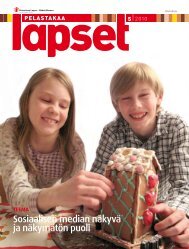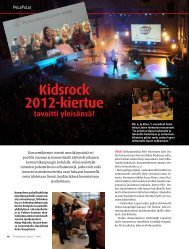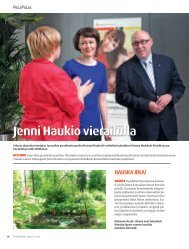4.2 Draft Child BillThe first draft of the Bill from the AG’s office which was forwarded to parliament for approval <strong>in</strong>1995 was considered by civil society and other human <strong>rights</strong> groups as anti-<strong>child</strong> <strong>rights</strong> as it wasseen to “crim<strong>in</strong>alize <strong>child</strong>hood”. The NGO Child Rights Coalition mobilized CSOs to oppose the Billand with support from stakeholders <strong>in</strong>clud<strong>in</strong>g <strong>in</strong>ternational NGOs <strong>in</strong> the count<strong>ry</strong> the Coalitionorganized workshops, meet<strong>in</strong>gs, sem<strong>in</strong>ars and lobby<strong>in</strong>g forums to discuss the draft Child Bill.Media adverts were used to highlight shortcom<strong>in</strong>gs <strong>in</strong> the proposed legislation. The Coalition alsolobbied parliamentarians through sem<strong>in</strong>ars. Thus the parliament did not approve the first draft.With support from UNICEF and <strong>in</strong> collaboration with the Department of Children Services KAACRorganized a retreat with the Parliamenta<strong>ry</strong> Committee on Social Welfare, Labour and Health whichwas held <strong>in</strong> Mombasa <strong>in</strong> September, 2000. The retreat was attended by 33 parliamentarians,members of the judicia<strong>ry</strong> and representatives of the <strong>child</strong>ren sector who <strong>in</strong>cluded lawyers withexpertise <strong>in</strong> <strong>child</strong>ren matters. The meet<strong>in</strong>g proposed f<strong>in</strong>al amendments to the draft Bill and thesewere later forwarded to the AG.When the amended Draft Child Bill was taken back to parliament for debate it passed the first andsecond read<strong>in</strong>gs and after undergo<strong>in</strong>g m<strong>in</strong>imal amendments it was presented for the 3 rd and f<strong>in</strong>alread<strong>in</strong>g. The draft Bill received Presidential Assent on 31 st December, 2000, and was f<strong>in</strong>ally passed<strong>in</strong> Parliament <strong>in</strong> March, 2001, 6 years after the first draft was prepared. The Children Act f<strong>in</strong>allyentered <strong>in</strong>to force on March 1, 2002.Why a Children Act?The enactment of the Children Act was a landmark <strong>in</strong> <strong>Kenya</strong> as it was the first law thatdomesticated an <strong>in</strong>ternational Convention, the UNCRC. The pr<strong>in</strong>ciples that had hitherto beencelebrated <strong>in</strong> the <strong>in</strong>ternational norm sett<strong>in</strong>g forums such as the pr<strong>in</strong>ciple of the best <strong>in</strong>terests of the<strong>child</strong> became part of <strong>Kenya</strong>’s domestic litigation vocabula<strong>ry</strong>. 36 It was also the first law <strong>in</strong> <strong>Kenya</strong> tobe translated <strong>in</strong>to Kiswahili, an <strong>in</strong>itiative of the government <strong>in</strong> collaboration with GTZ (now referredto as GIZ) and SCC. Organisations such as ANPPCAN <strong>Kenya</strong>, GCN and KAACR have developed<strong>child</strong> friendly and simplified versions of the Act for different categories of stakeholders <strong>in</strong>clud<strong>in</strong>g<strong>child</strong>ren. These materials have been used nationally to sensitize both <strong>child</strong>ren and adults on theprovisions of the Act. A Braille version of the Act was also developed <strong>in</strong> collaboration withWheelpower International and the Association of the Physically Disabled <strong>in</strong> <strong>Kenya</strong> (APDK) withsupport from SCC. The Children Act was the first law to be translated <strong>in</strong>to Braille and this hasenabled people with visual impairment to implement the Act on the same level with otherstakeholders.As a measure of implementation of the Act the government <strong>in</strong> collaboration with partners <strong>in</strong> the<strong>child</strong>ren sector organized a meet<strong>in</strong>g <strong>in</strong> Nairobi <strong>in</strong> 2001 to map out strategies for its implementationnationally. Dur<strong>in</strong>g the meet<strong>in</strong>g it was agreed that sensitisation and awareness creation workshopstarget<strong>in</strong>g <strong>child</strong>ren and adults be held nationally and that <strong>child</strong>ren offices would act as focal po<strong>in</strong>ts.The count<strong>ry</strong> was mapped out with organisations committ<strong>in</strong>g to allocate resources for tra<strong>in</strong><strong>in</strong>gs andsensitisation workshops <strong>in</strong> their areas of operation to ensure <strong>child</strong>ren, adults and other36THE LAW ON CHILDREN. A CASE DIGEST. VOL. 1. Centre For Child Law And Policy Research. Children’s Legal Action Network(CLAN). 200732
stakeholders were sensitized on the provisions of the Act. These sensitisation workshops cont<strong>in</strong>ueto date and are carried out by both government officers and CSOs.4.3 Key provisions <strong>in</strong> the Children ActThe Act is divided <strong>in</strong>to 14 Parts with 200 Sections and 9 Schedules and these address the <strong>rights</strong> a<strong>child</strong> is entitled to and the role of the government, parents and other duty bearers <strong>in</strong> ensur<strong>in</strong>g<strong>child</strong>ren enjoy the <strong>rights</strong>. The <strong>rights</strong> are <strong>in</strong>terdependent and apply to all <strong>child</strong>ren without dist<strong>in</strong>ction.They are classified as life and survival, development, protection and participation <strong>rights</strong>. Theimplementation of these <strong>rights</strong> is guided by the key pr<strong>in</strong>ciples of the best <strong>in</strong>terests of the <strong>child</strong> 37and non – discrim<strong>in</strong>ation 38 which the Act borrows from the ACRWC and the UNCRC. Courts haveused these pr<strong>in</strong>ciples to determ<strong>in</strong>e matters concern<strong>in</strong>g <strong>child</strong>ren which is a departure from the pastwhen matters were determ<strong>in</strong>ed purely on the basis of law and other established standards, someof which were not always <strong>in</strong> the best <strong>in</strong>terests of the <strong>child</strong>.The Act provides for penalties for violation of <strong>rights</strong>. However, stakeholders <strong>in</strong> the <strong>child</strong>ren sectorhave advocated for stricter penalties to offer better protection of <strong>child</strong>ren’s <strong>rights</strong> as it is felt that thecurrent penalties do not act as deterrents to violations. 39 This issue has been addressed <strong>in</strong> theamendments to the Act.Children courts are provided for to hear matters concern<strong>in</strong>g <strong>child</strong>ren and the Act details how thecourts should conduct themselves to ensure the privacy of the <strong>child</strong>, among other considerations.These courts are <strong>in</strong> Nairobi, Mombasa, Kakamega and Nakuru. In the past judicial officers did notaspire to sit <strong>in</strong> <strong>child</strong>ren courts as these were considered <strong>in</strong>ferior to other courts. However, with timethis attitude is slowly chang<strong>in</strong>g, a situation that can be attributed to capacity build<strong>in</strong>g for membersof the judicia<strong>ry</strong> through activities such as tra<strong>in</strong><strong>in</strong>g conducted by organisations such as CLAN,KAACR, The CRADLE and ANPPCAN. Issues addressed <strong>in</strong> the tra<strong>in</strong><strong>in</strong>g <strong>in</strong>clude the Children Actand other statutes, human <strong>rights</strong> treaties and <strong>child</strong> <strong>rights</strong> and <strong>child</strong> protection. 40 Some of thetra<strong>in</strong><strong>in</strong>gs have <strong>in</strong>corporated sessions on counsel<strong>in</strong>g which have enabled judicial officers betterunderstand <strong>child</strong>ren and the circumstances they live <strong>in</strong>, thereby assist<strong>in</strong>g them make a judgmentbased on the best <strong>in</strong>terests of the <strong>child</strong>.The Children Act drew <strong>in</strong>spiration from the ACRWC to provide for duties and responsibilities of the<strong>child</strong> <strong>in</strong> addition to the <strong>rights</strong>. Duties <strong>in</strong>clude respect for parents and elders <strong>in</strong> the community,work<strong>in</strong>g towards the cohesion of the family as well as strengthen<strong>in</strong>g positive cultural values <strong>in</strong> thecommunity. This has helped address one of the concerns raised that <strong>child</strong> <strong>rights</strong> advocates haveonly focused on sensitiz<strong>in</strong>g <strong>child</strong>ren about their <strong>rights</strong> while ignor<strong>in</strong>g the responsibility part, asituation that has tended to put <strong>child</strong>ren on a collision course with their parents, guardians andother duty bearers. Current sensitisation tra<strong>in</strong><strong>in</strong>gs emphasize both the <strong>rights</strong> and duties of <strong>child</strong>ren.37In all actions concern<strong>in</strong>g <strong>child</strong>ren, whether undertaken by public or private social welfare <strong>in</strong>stitutions, courts of law, adm<strong>in</strong>istrativeauthorities or legislative bodies, the best <strong>in</strong>terests of <strong>child</strong>ren shall be a prima<strong>ry</strong> consideration.38Non–Discrim<strong>in</strong>ation - No <strong>child</strong> shall be subjected to discrim<strong>in</strong>ation on the ground of orig<strong>in</strong>, sex, religion, creed, custom, language,op<strong>in</strong>ion, conscience, colour, birth, social, political, economic or other status, race, disability, tribe, residence or local connection.39Any person who is convicted of hav<strong>in</strong>g <strong>in</strong>fr<strong>in</strong>ged the <strong>rights</strong> of a <strong>child</strong> shall be liable to a term of imprisonment not exceed<strong>in</strong>g twelvemonths, or to a f<strong>in</strong>e not exceed<strong>in</strong>g fifty thousand shill<strong>in</strong>gs or to both f<strong>in</strong>e and imprisonment.40Some of the tra<strong>in</strong><strong>in</strong>gs have been conducted <strong>in</strong> collaboration with the Judicial Tra<strong>in</strong><strong>in</strong>g Institute.33


